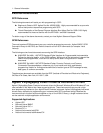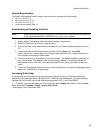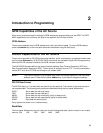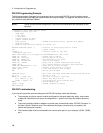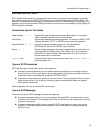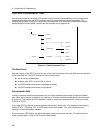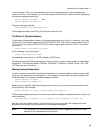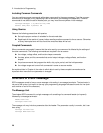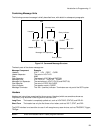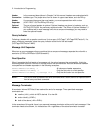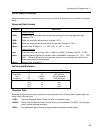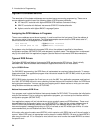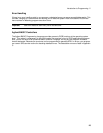
2 - Introduction to Programming
20
Including Common Commands
You can combine common commands with system commands in the same message. Treat the common
command as a message unit by separating it with a semicolon (the message unit separator). Common
commands do not affect the active header path; you may insert them anywhere in the message.
VOLTage:TRIGger 7.5;INITialize;*TRG
OUTPut OFF;*RCL 2;OUTPut ON
Using Queries
Observe the following precautions with queries:
u Set up the proper number of variables for the returned data.
u Read back all the results of a query before sending another command to the ac source. Otherwise
a Query Interrupted error will occur and the unreturned data will be lost.
Coupled Commands
When commands are coupled it means that the value sent by one command is affected by the settings of
the other commands. The following commands are coupled in the ac source:
u the voltage, voltage offset, and function shape commands
u the step, pulse, and list commands that control output voltages, voltage offsets, and function
shapes
u the pulse commands that program the width, duty cycle, period, and the hold parameter
u the voltage range and current limit commands in some ac source models
As explained later in Chapter 4, the order in which data is sent by these coupled commands can be
important when more than one parameter is changed.
Structure of a SCPI Message
SCPI messages consist of one or more message units ending in a message terminator. The terminator is
not part of the syntax, but implicit in the way your programming language indicates the end of a line (such
as a newline or end-of-line character).
The Message Unit
The simplest SCPI command is a single message unit consisting of a command header (or keyword)
followed by a message terminator.
ABORt<newline>
VOLTage?<newline>
The message unit may include a parameter after the header. The parameter usually is numeric, but it can
be a string:
VOLTage 20<newline>
VOLTage MAX<newline>



